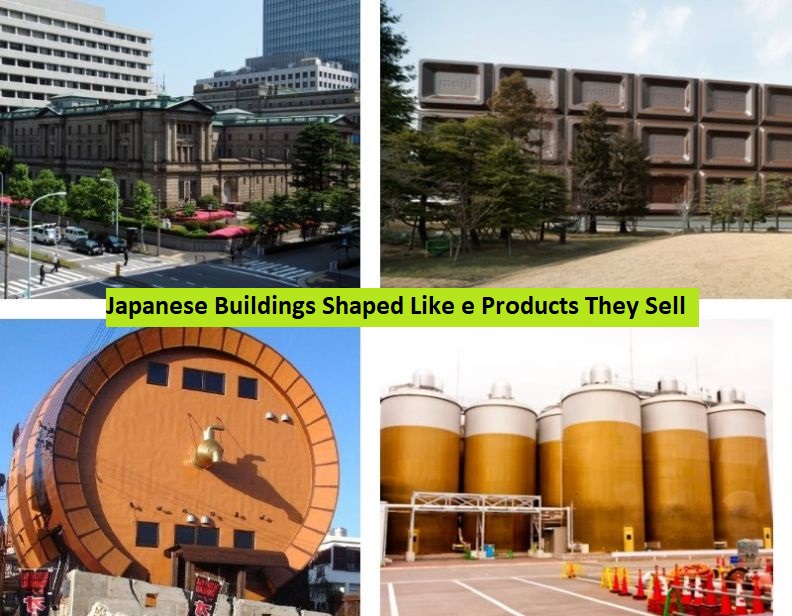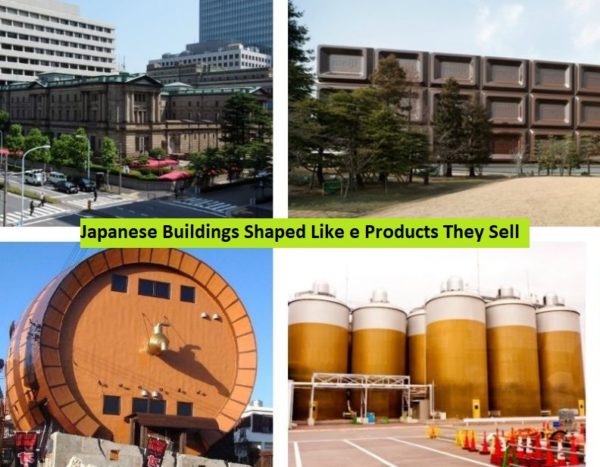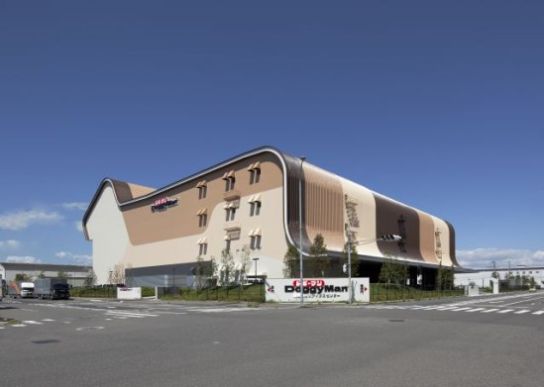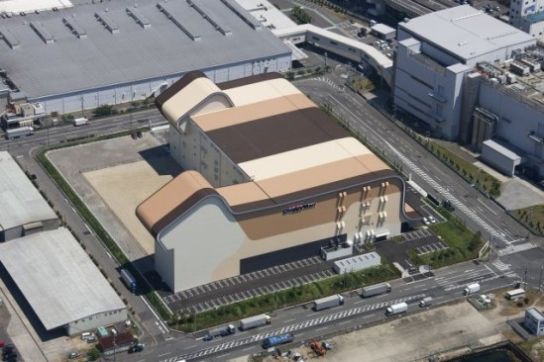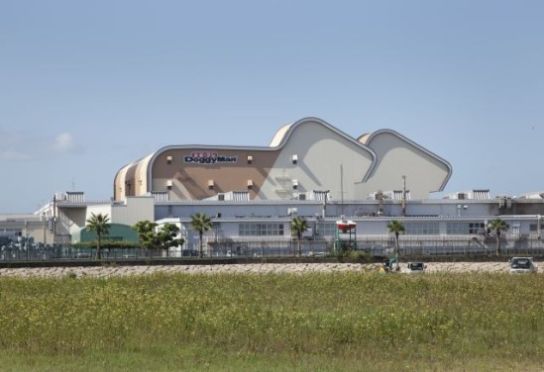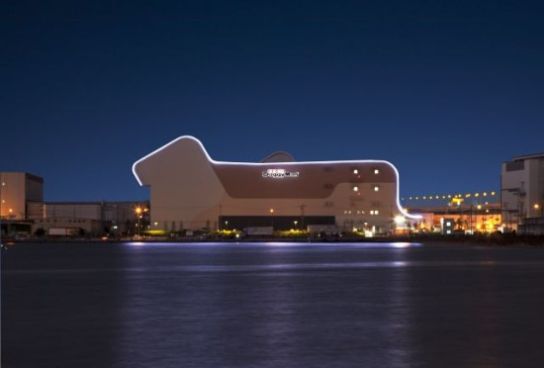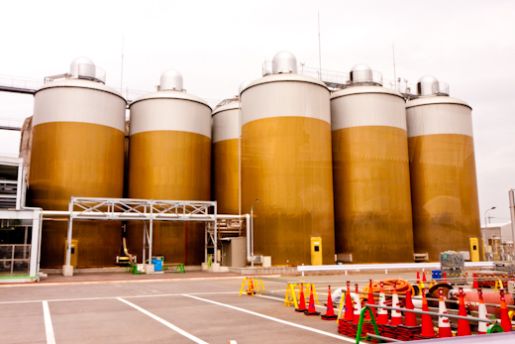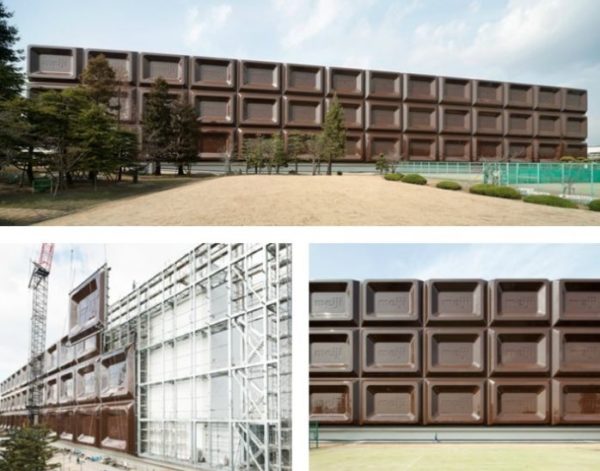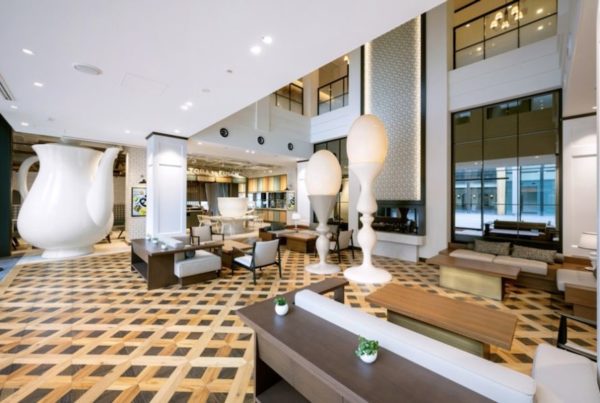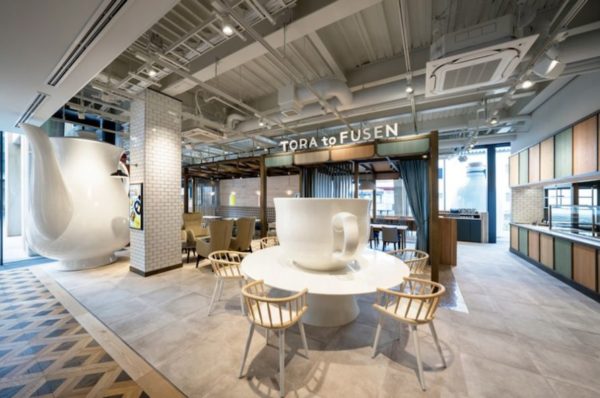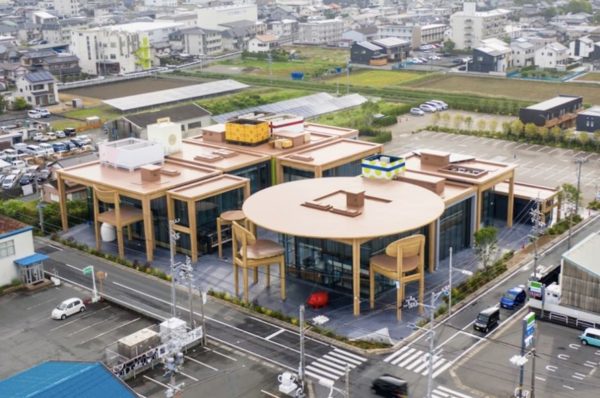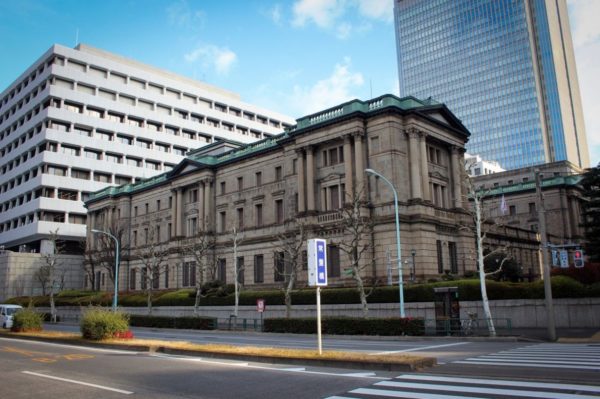Architectural Delights: Exploring Japanese Buildings Shaped Like the Products They Sell
Are you looking for unique Japanese Buildings? Recently, during our exploration in Osaka, we came across a peculiar sight—an architectural gem in the shape of a dachshund. Curiosity led us to discover that this whimsical structure actually served as a warehouse and distribution center for DoggyMan, a renowned Japanese pet food company. The design perfectly embodied their purpose—what you see is precisely what you get.
This delightful encounter sparked our curiosity further. We found ourselves wondering about other instances of novelty architecture in Japan, where buildings are shaped like the products they offer or serve as a visual representation of their contents. Unsurprisingly, we uncovered a treasure trove of such architectural marvels, many of which are open to the public or offer captivating tours, making them ideal destinations for a fun-filled adventure. Allow us to share a few of our personal favorites with you.
1. DoggyMan Kansai Logistics Center
One notable example of novelty architecture is the DoggyMan Kansai Logistics Center. Designed by Nikken and finished in 2011, this distinctive building takes the form of a dachshund. Situated in Osaka, it catches the eye of passing motorists on the Hanshin Expressway No. 4 (Gmap). At night, an illuminated outline on the roof ensures that the charming shape remains visible even in the darkness, adding to its allure.
2. Kirin Beer Factory (Nagoya)
Kirin Beer Factory is considered unique Japanese buildings. It is another captivating example is the Kirin Beer Factory, situated near the Tokaido Shinkansen Line and visible as you depart from Nagoya Station. Instantly recognizable, the brewery’s tanks are cleverly painted to resemble a tall glass of beer, complete with a golden brown hue at the bottom and frothy white foam at the top. If you find yourself in Nagoya, you have the opportunity to schedule a complimentary tour and tasting at the factory. To enhance the experience, they even offer a trendy restaurant where you can indulge in their delightful brews.
3. Meiji Chocolate Factory (Osaka)
A remarkable attraction in Osaka is the Meiji Chocolate Factory. Renowned for their delectable chocolate candy, Meiji made the decision to renovate their original factory, constructed back in 1955, in 2011. This factory has always held a special place in the hearts of children, and the company aimed to preserve that magical essence in their new facility.
To achieve this vision, Taisei Design proposed an ingenious idea: transforming the entire façade into a colossal chocolate bar, visible to those traveling on the JR Kyoto train line. The façade stands impressively at 28 meters in height and stretches an impressive 166 meters in length—equivalent to a whopping 38,000 bars of chocolate. If you wish to experience this chocolate wonderland firsthand, Meiji Chocolate Factory welcomes visitors with free tours, allowing you to immerse yourself in the world of chocolate.
4. Shunkado “Sweets Bank” Headquarters (Hamamatsu)
Hamamatsu is home to the captivating headquarters of Shunkado, fondly referred to as the “Sweets Bank.” Shunkado originated in 1887 as a small Japanese-style confectionery shop, gaining fame for its exceptional creations, including the iconic Unagipie pastry crafted from eel extract.
In celebration of their 130th anniversary, Shunkado decided to revamp their headquarters with a distinct concept: oversized tables and chairs. While they don’t actually sell furniture, the design represents their belief that their delectable treats have the power to bring families together around the dining table. This unique architectural choice reflects their commitment to creating memorable moments through shared indulgence.
Venturing inside the headquarters, visitors are greeted with an enchanting ambiance. The interiors are adorned with larger-than-life objects associated with tea time and snacking, evoking a sense of being transported into the world of Lilliputians. It’s an extraordinary experience that immerses guests in the whimsical charm of Shunkado’s confectionery world.
5. Taru Tonnaeau in Okinawa
In the vibrant region of Okinawa, there exists a unique establishment called Taru Tonneau, also known as the Barrel Restaurant. True to its name, this bar and eatery take the form of a colossal whiskey barrel. While its exact inception date remains unclear, Taru Tonneau has been captivating visitors since at least 2012.
The design of Taru Tonneau stands out as one of the more unconventional examples of novelty architecture we have encountered. Its distinctive appearance serves as a bold and effective statement, leaving no doubt about the nature of its business—an establishment dedicated to the enjoyment of food and beverages. Interestingly, the restaurant’s website retains a charmingly nostalgic aesthetic reminiscent of the 1990s, adding to the overall allure of the place.
6. The Bank of Japan
The Bank of Japan (BOJ) plays a significant role in the issuance of banknotes and the implementation of monetary policy, even though it does not directly sell money. It is therefore fitting that the former headquarters of the Japanese yen currency is shaped in resemblance to the kanji character for “yen” (円). However, similar to the previous examples, the true form of the BOJ building is not immediately apparent from the street.
Fortunately, with the help of Google Earth, we were able to obtain a bird’s-eye view, which unveiled its yen-inspired design. The BOJ building, designed by Tatsuno Kingo in 1896, showcases a neo-baroque style. Notably, Tatsuno Kingo, the mastermind behind this architectural gem, is also credited with designing the iconic Tokyo Station.
The BOJ building stands as a testament to the historical and cultural significance of the yen, seamlessly blending its purpose and architectural aesthetics in a grand fashion.
It is not clear if the yen design of the BOJ building was intentional, and there is some confusion over whether the kanji for yen was even used back then. The formal kanji for yen was 圓, and it wasn’t simplified to 円 until 1946. However, the Meiji government established a formal currency in 1871, 25 years before Kingo designed the BOJ, and at the time they also designated 円 as the kanji. Moreover, the BOJ building was constructed where a gold coin foundry was previously located. Although the evidence is inconclusive, it is possible that Kingo intended the yen semblance as a gift for future internet dwellers to marvel over.
Read also: 20 Amazing Pictures Without Photoshop
